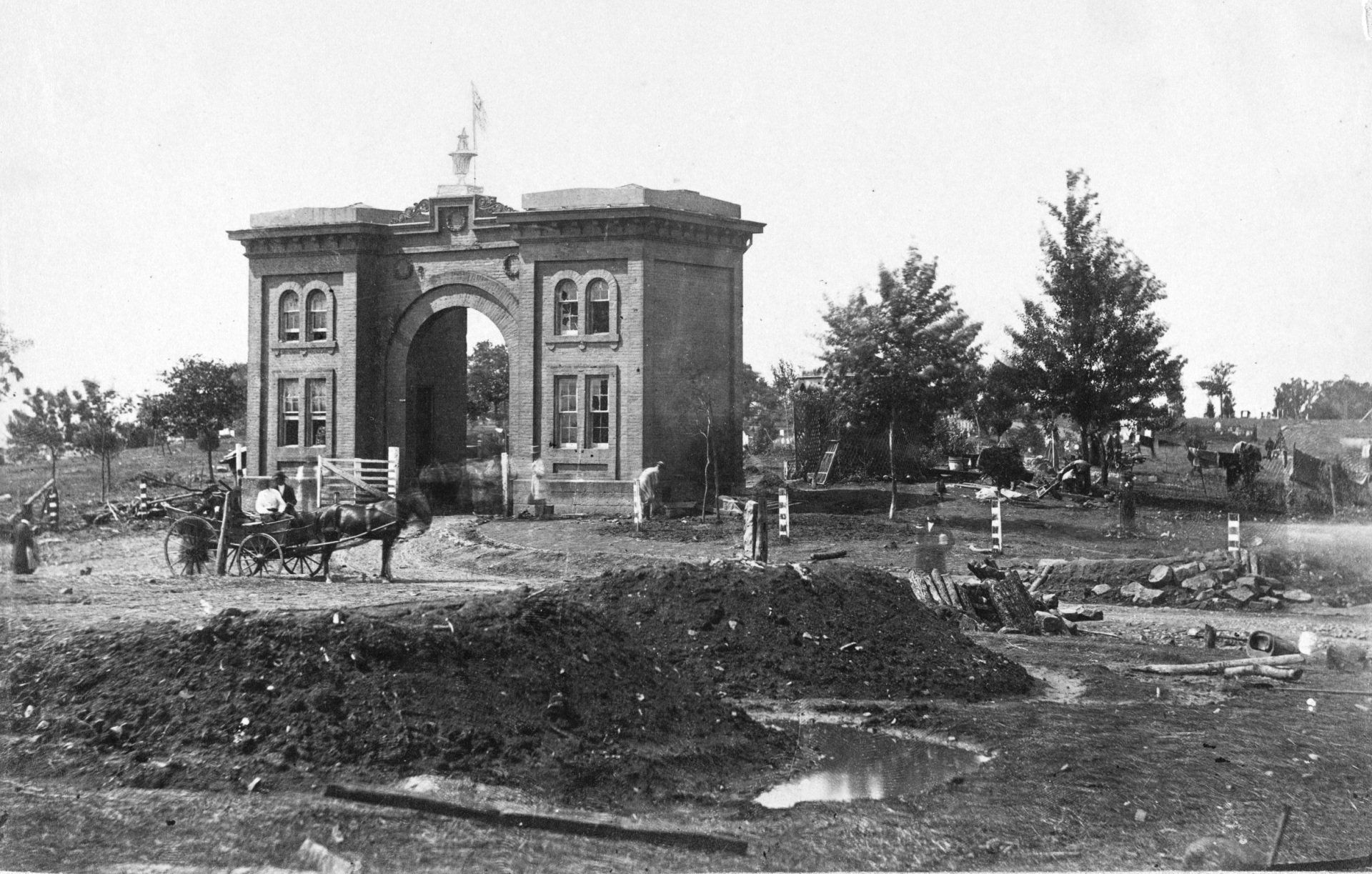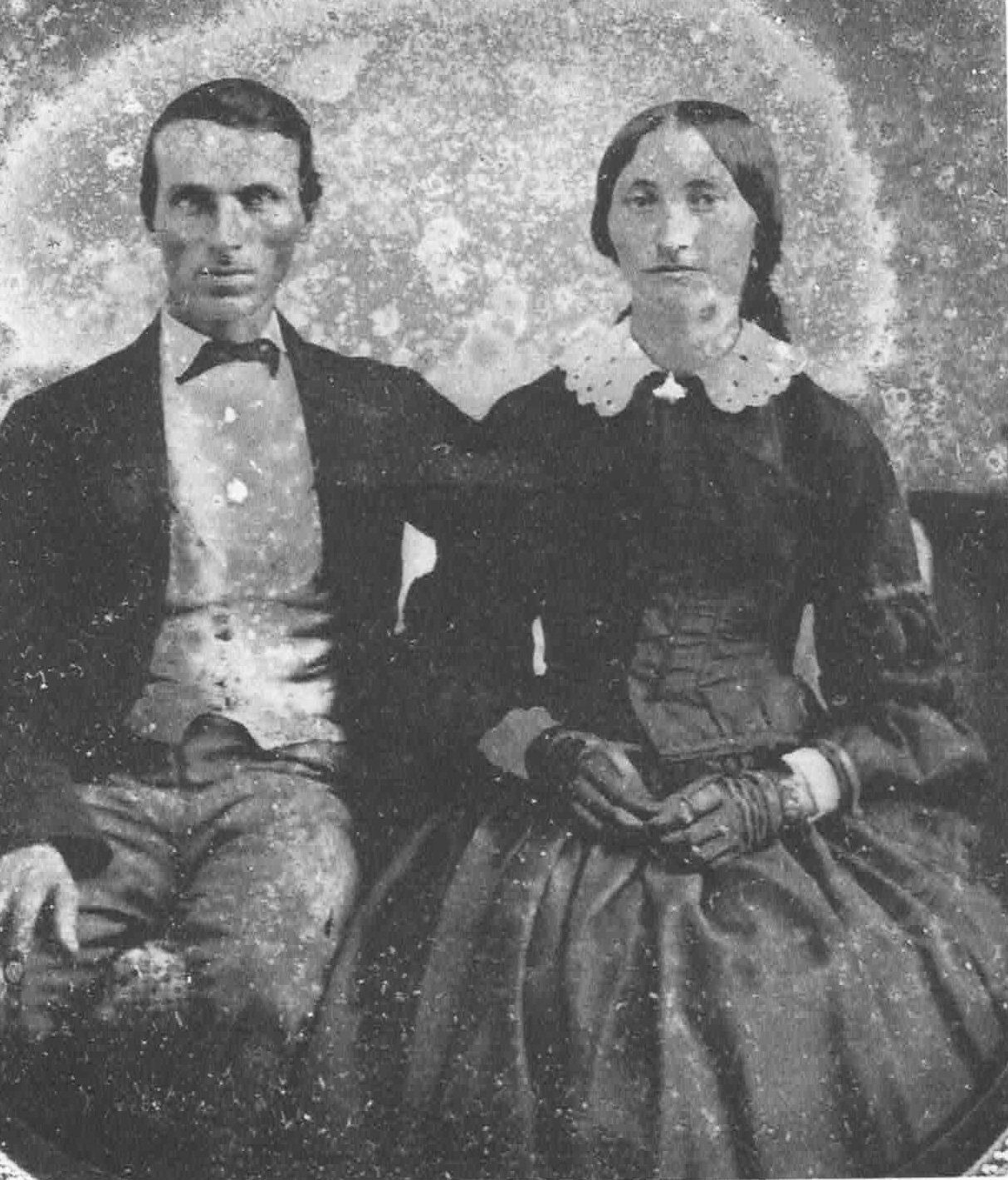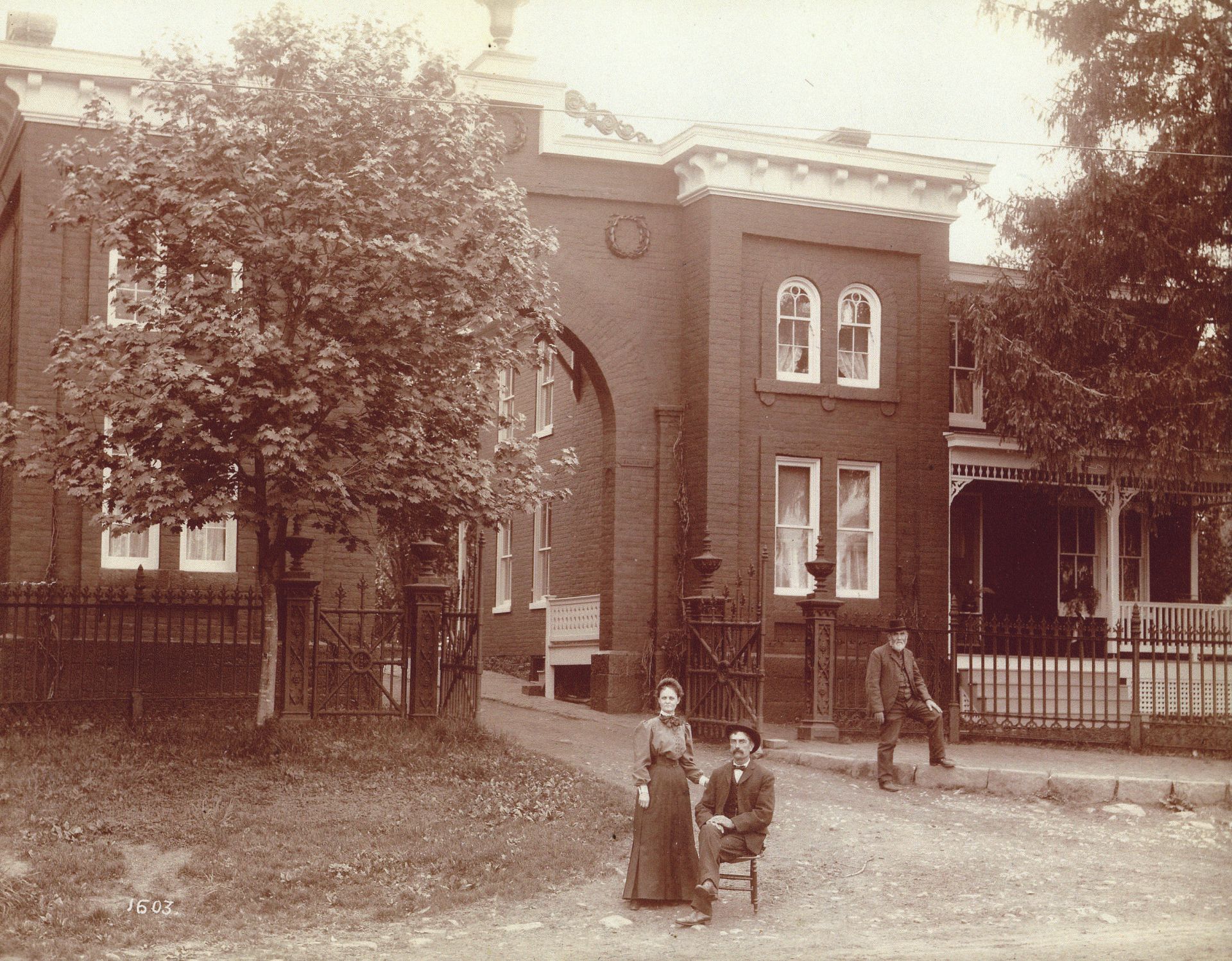
Evergreen Cemetery’s gatehouse, completed in 1855, is likely the only structure in Gettysburg that still serves the purpose for which it was built. First serving as the home of its original caretaker, Peter Thorn and his family, the gatehouse has continued to house the caretaker of the cemetery over one hundred and sixty years later.
Brian Kennell, the current superintendent and resident of the gatehouse, said that “the builders never dreamed it would become such an iconic structure in Gettysburg.” After so many decades of continual use, the gatehouse is in dire need of restoration. Unlike other historic structures in Gettysburg, there has never been money set aside for the gatehouse, as general funds allotted to the cemetery have been used to keep the cemetery operating, and maintaining its extensive grounds.
When Peter and Elizabeth Thorn first moved into the gatehouse with their three sons and her aged parents, the clouds of war were already gathering on the horizon with the disagreement over slavery and states’ rights dividing the nation. With the election of Abraham Lincoln five years later, the point of no return had come. Peter Thorn enlisted in the Union cause, and Elizabeth took the position as caretaker in her husband’s absence.
Then the war came to Gettysburg – and to Cemetery Hill. The gatehouse was used as headquarters for General Oliver O. Howard, commander of the Federal Eleventh Corps. Elizabeth, her parents, and her sons left the gatehouse and found shelter in a farm farther south of town. When she returned, their belongings had been taken or ruined. It took Mrs. Thorn several days to clean the gatehouse. Her greatest contribution occurred in the ensuing weeks, when she buried nearly one hundred slain soldiers from the battle. Expecting her fourth child, Elizabeth and her father buried the sons of the Union – and some from the Confederacy – on the slopes of Cemetery Hill. Today, the Women’s Memorial in Evergreen Cemetery, located just south of the gatehouse, commemorates her courageous act. It was dedicated in 2002.

A Battle-Scarred Gatehouse, 1863
(Evergreen Cemetery)
Peter and Elizabeth Thorn are buried in Evergreen Cemetery, not far from the Union soldiers interred there.
When Peter Thorn retired from his work in Evergreen in 1875, William Pfeffer was hired as the new caretaker. During his tenure, the Gettysburg Trolley line extended to the gatehouse, and an addition was built onto it. When Mr. Pfeffer died in 1895, Harry Trostle was elected by the Evergreen Cemetery Board as superintendent. In the twenty-five years of Mr. Trostle’s tenure, there were additional improvements to the cemetery. Additional land was purchased to enlarge the cemetery. Jennie Wade’s tombstone was placed and dedicated in 1901. A monument was placed over John Burns’s grave in 1904 by GAR Post #9 of Gettysburg. Flag staffs that keep the U.S. flag flying day and night over both of these historic graves were placed. In the gatehouse, a telephone was installed in 1912.
When Harry Trostle resigned in 1920, Sandoe Kitzmiller took on the position at Evergreen Cemetery. During his time at Evergreen, the iron fence, taken from Lafayette Square in Washington, D.C., was placed to mark the boundary between Evergreen Cemetery and the Soldiers’ National Cemetery. When Sandoe Kitzmiller resigned in 1947, his son Howard became superintendent of Evergreen Cemetery. During his time as caretaker, the gatehouse was sandblasted in 1966 to remove the original color of the brick and cornices. Howard Kitzmiller resigned in 1974. Glenn Chronister served for two years as superintendent, until Art Kennell took over in 1976. When he resigned in 1991, Art's son Brian Kennell took the position – which, thirty years later, he currently holds.
“The gatehouse is a great asset in Civil War history and the town’s history,” he says. “That’s why we need to preserve it.”
The Evergreen Cemetery Board will decide how best to preserve the historic gatehouse – which is symbolic as the gateway to eternity. It was painted during the Civil War, and remained painted into the twentieth century. It is possible that painting the gatehouse again will aid in preserving the original bricks.
In order to raise funding for the restoration of the gatehouse, Mr. Kennell is writing a revised edition of his book, Beyond the Gatehouse: Gettysburg’s Evergreen Cemetery,
first published in 2000. Utilizing his musical talent, Brian has also finished a CD in Nashville. Proceeds from those sales will go to the preservation fund. “I wrote the songs in the gatehouse,” he explained, “so it’s appropriate to use those songs to restore it.”
Over the winter the board will evaluate the work, both short-term and long-term, to be done to preserve the gatehouse.
Donations may be sent to www.EvergreenCemetery.org
. Those interested in purchasing a CD may find it at www.BrianKennell.com
.
Plans continue also on improving the cemetery grounds. For 2022, a garden dedicated to poet Marianne Moore is forthcoming.
Gettysburg’s famed gatehouse is currently weakened by the ravages of time. To keep the history alive, it needs to be preserved before it, too, is only a memory.

The First Caretakers, Peter & Elizabeth Thorn
(Adams County Historical Society)
Sources: Interview with Brian Kennell, October 11, 2021. Kennell, Brian A. Beyond the Gatehouse: Gettysburg’s Evergreen Cemetery . Hanover, PA: Sheridan Press, 2000. Elizabeth Thorn Civilian Accounts File, Adams County Historical Society, Gettysburg, PA.



